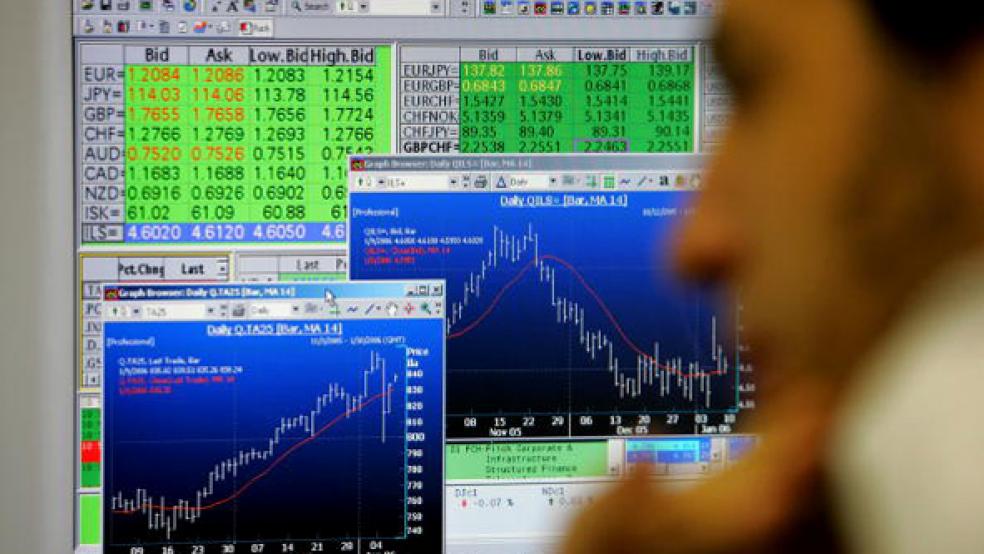Investing has never been more accessible, more necessary or filled with many booby traps. You can never guarantee complete success on Wall Street, but knowing a few common blunders can improve your odds.
Here, in reverse order, are the top investing pitfalls.
10. Splitting your money among managers. Let’s say Joanne has $3 million divided between managers. One takes a very conservative tack and the other uses a Wild West approach. How does Joanne decide who does the better job for her: the advisor taking less risk or the one who always bets the whole pot?
9. Too many overlapping holdings. You may have a host of mutual funds with appealing names, but is your portfolio truly well-diversified?
Or does it miss whole asset classes? I’ve seen portfolios consisting almost exclusively of stocks of large U.S. companies.
What about U.S. mid- or small-capitalization companies? International and emerging market stocks? Bonds? Real estate?
The only true investment free lunch comes from asset allocation’s benefits. Forget the promises of great returns and magic feats of performance from a single sector or stock.
8. You or your advisor timed the market (and got it wrong). Timing isn’t everything in investing. Consistent attention and follow up mean just as much.
Let’s say Harold’s $1 million investment account is, according to him, dormant. A quick look at his portfolio reveals that his advisor sold half of his portfolio in 2008, at the bottom of the market, and left the money sitting in cash ever since. Harold didn’t notice this and his advisor didn’t tell him.
7. Buying high, selling low. Whether you invest yourself or your advisor invests for you, avoid following the herd. Examples abound of investors who hopped in and out of positions to time the market and only succeeded in trading 15% annual returns for 2% ones. Your best option: Staying the course.
6. Too much of your wealth concentrated in one place. Remember Enron Corp., where employees loaded themselves with company stock and the whole investment vanished when the energy giant dissolved in 2001? Your own company stock can tank just like any other investment.
If your advisor only pays attention to what he or she manages (and invoices for), you might not detect a similar problem for a long, long time.
5. Hidden costs. The investment world teems with ways to whittle your returns without you ever knowing it – unless you look hard.
Suppose Jill’s entire $2 million portfolio comprises C-share mutual funds, a type of load fund that charges a small percentage if she redeems her shares within a set period, typically a year. Jill paid a 1% management fee to her advisor and paid the additional 1% per year in commissions that her advisor pockets for selling and maintaining the C-share (aka a level-load) fund.
Among other types of load funds, A-share funds in particular extract a heavy initial commission fee, up to 5.75% annually. Fees for load funds tend to drop as you increase your investments in the fund.
4. Buying retail, not wholesale. In mutual fund investing, more economical options typically mean low-cost index funds and avoiding expensive, actively managed funds that carry annual fees of up to 3%. Expense is a big predictor of (and drag on) net investment performance.
3. Studying the rearview mirror. Chasing past performance in a fund, stock or entire asset class guarantees nothing. In fact, the theory of mean reversion holds that an investment that did relatively well in the past will revert to its average historical performance and relatively underperform in the future.
2. Ignoring taxes. Municipal bonds, stocks and tax-advantaged equity mutual funds flourish in taxable accounts, where you use money you already paid tax on. Ordinary bonds, real estate, commodities and other tax-inefficient holdings belong in tax-deferred accounts.
Sticking after-tax money into a tax-deferred variable annuity, for example, translates into unwittingly taking money on which you already paid taxes and paying taxes on it again when you withdraw it in the future.
1. A portfolio inconsistent with your risk tolerance and future financial needs. A blizzard of investment choices; a roller coaster market; skyrocketing costs for staples such as housing and health care: You face a lot of predicting with your money. A qualified planner might best tell you best if your portfolio can fund your future financial needs.
Follow AdviceIQ on Twitter at @adviceiq.
Eve Kaplan, CFP, is a fee-only advisor in Berkeley Heights, N.J. Kaplan Financial Advisors is a Registered Investment Advisor in New Jersey and New York.
Top Reads from The Fiscal Times




